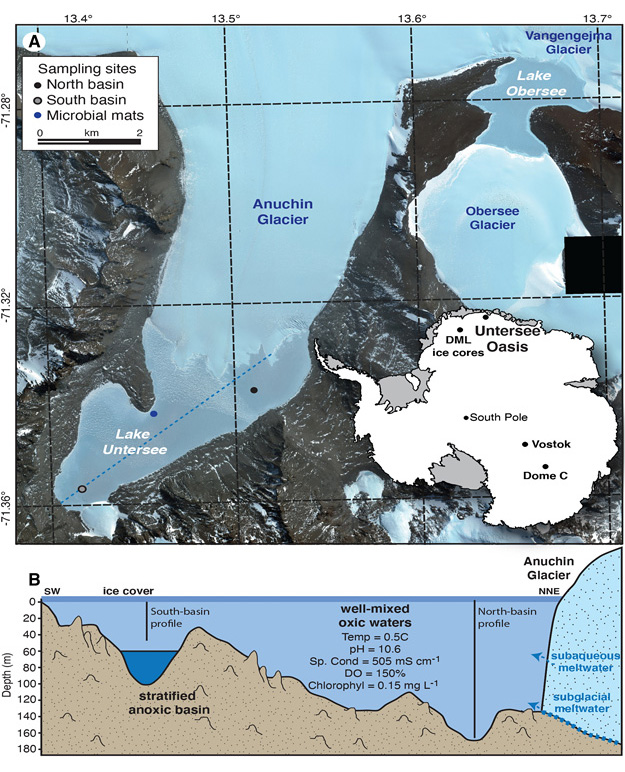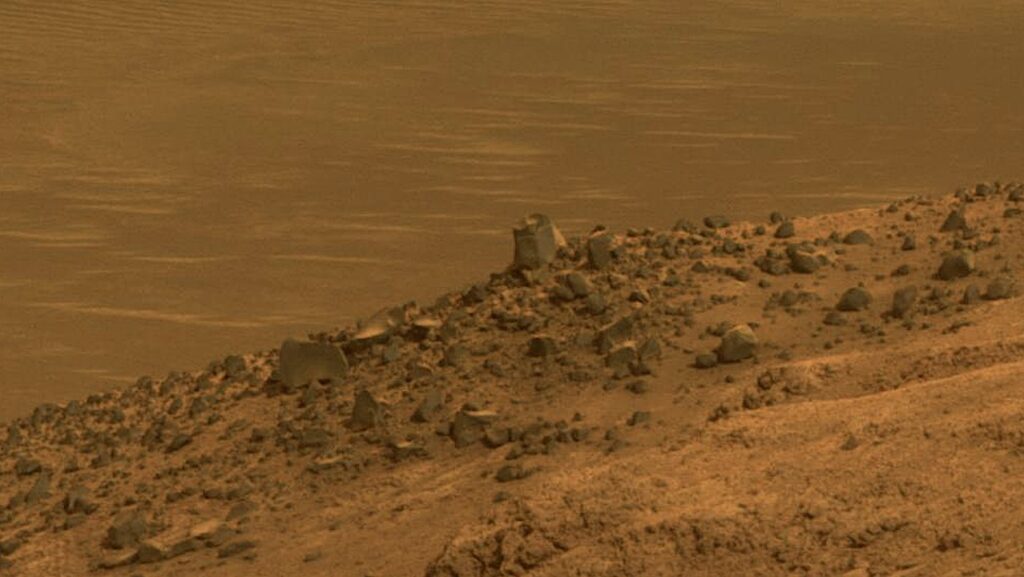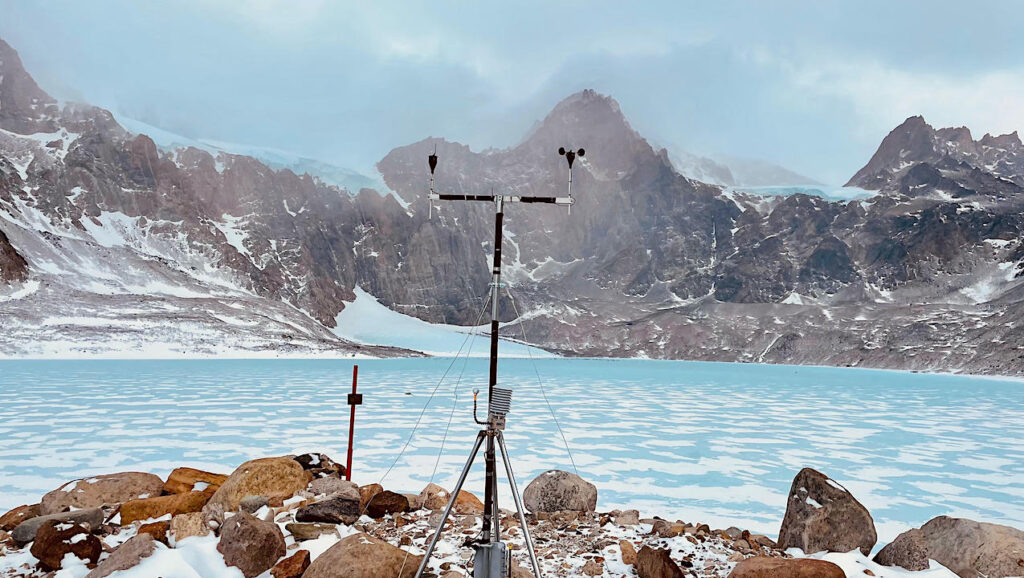Sources Of Solutes And Carbon Cycling In Perennially Ice-covered Lake Untersee, Antarctica

Perennially ice-covered lakes that host benthic microbial ecosystems are present in many regions of Antarctica. Lake Untersee is an ultra-oligotrophic lake that is substantially different from any other lakes on the continent as it does not develop a seasonal moat and therefore shares similarities to sub-glacial lakes where they are sealed to the atmosphere.
Here, we determine the source of major solutes and carbon to Lake Untersee, evaluate the carbon cycling and assess the metabolic functioning of microbial mats using an isotope geochemistry approach. The findings suggest that the glacial meltwater recharging the closed-basin and well-sealed Lake Untersee largely determines the major solute chemistry of the oxic water column with plagioclase and alumino-silicate weathering contributing < 5% of the Ca2+-Na+ solutes to the lake.

(A) Location map of Lake Untersee in central Dronning Maud Land, Antarctica. (B) Cross-section of bathymetry of Lake Untersee and location of sampling in north and south basins. Background Digital Globe satellite imagery, December 7, 2017; ©2020 Digital Globe NextView License (provided by NGA commercial imagery program). Map generated using ArcGISv10.
The TIC concentration in the lake is very low and is sourced from melting of glacial ice and direct release of occluded CO2 gases into the water column. The comparison of δ13CTIC of the oxic lake waters with the δ13C in the top microbial mat layer show no fractionation due to non-discriminating photosynthetic fixation of HCO3- in the high pH and carbon-starved water. The 14C results indicate that phototrophs are also fixing respired CO2 from heterotrophic metabolism of the underlying microbial mats layers. The findings provide insights into the development of collaboration in carbon partitioning within the microbial mats to support their growth in a carbon-starved ecosystem.
Full paper (open access) “Sources of solutes and carbon cycling in perennially ice-covered Lake Untersee, Antarctica“, Nature
Astrobiology








